
Worry about beam instability? Use the Eurocode 3 check
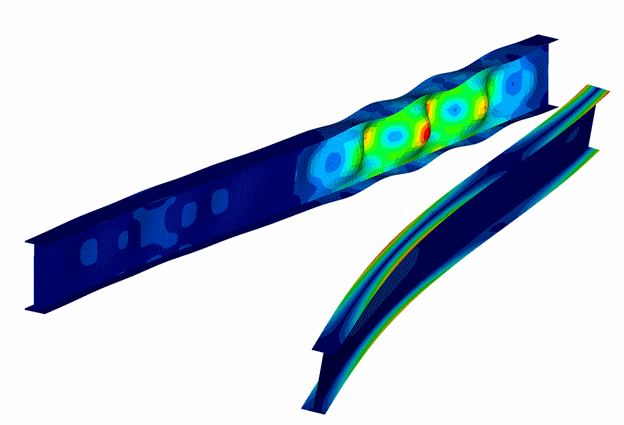
The Eurocode 3 rules estimate the risk of global and local buckling limits of the steel beam members with a classification based method. For the explanation of the checking procedure with the SDC Verifier software the beam member below is used. The beam member length is 7 m and the FEA model of this member consists of 30 beam elements. For the example, the beam member is simply supported at the ends and loaded with and axial load at the beam end and two side loads at the center of the beam:
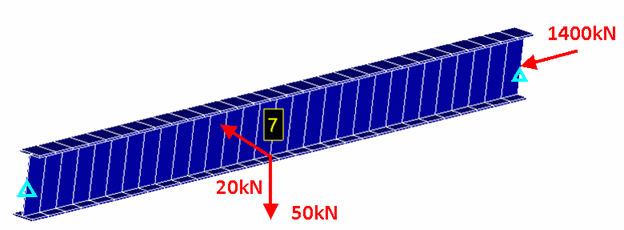
Local stability
The profile resistance against bending, tension, compression, torsion and shear depends on its behavior at its ultimate limit state (ULS).
To avoid local instability specific rules for popular shapes as I, H, U, T and L sections are used and furthermore the stability of each section profile is categorized into a specific cross section class.
The table below shows the section profile class and a short description of its behavior at its ultimate limit state (ULS).
Class 1 plastic hinge with full rotation capacity.
Class 2 plastic hinge with limited rotation capacity.
Class 3 no local buckling before reaching yield limit.
Class 4 local buckling is limiting factor.
The overall section behavior is determined by the lowest category of each plate part of the cross section. The classification of the webs and flanges of the cross section depends on the plate buckling parameters width/plate thickness ratio and the yield limit of the plate, see the table for internal compression as an example for classification below:


The cross section and the Eurocode 3 profile class of the example beam are shown below:
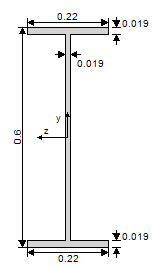
Flange Classification:

The Web and Overall Shape Classification:

Global stability
For global beam buckling the imperfection factor of the beam member and the corresponding buckling curve depend on the shape of the member, the fabrication method, the material type and the buckling direction:
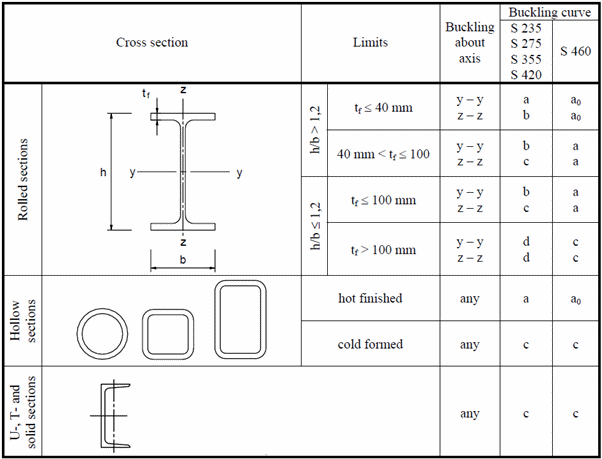
Together with the beam member length, the resulting reduction factor for a beam member can now be determined based on the figure below:
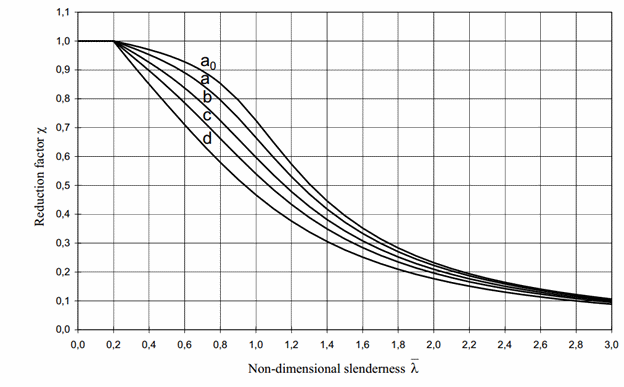

For the example beam member the bucking curve table with the resulting reduction factors is shown below:

In our example beam the buckling length for all directions is 7 m, but for lattice structures, the determination of the buckling lengths is more complex, see the figure below where the beam length over the strong axis is 8 m and over the weak axis 4 m:
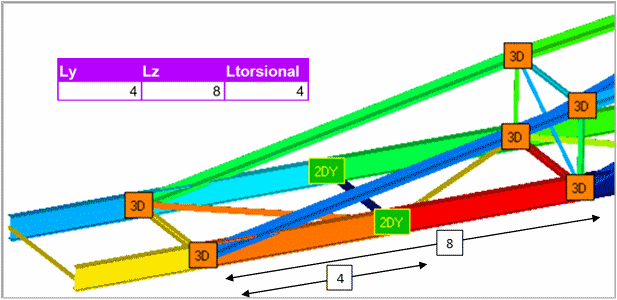
The beam member lengths are automatically calculated with the unique recognition tools of SDC Verifier.
Overall check
The complete checking structure of the SDC Verifier Eurocode 3 part 1-1 or EN 1993-1-1 is shown below:

For our example beam member the relevant loads are shown in the table below:

Based on the Eurocode 3 classification the cross-section check, the beam member buckling, and the overall checks are shown below:








